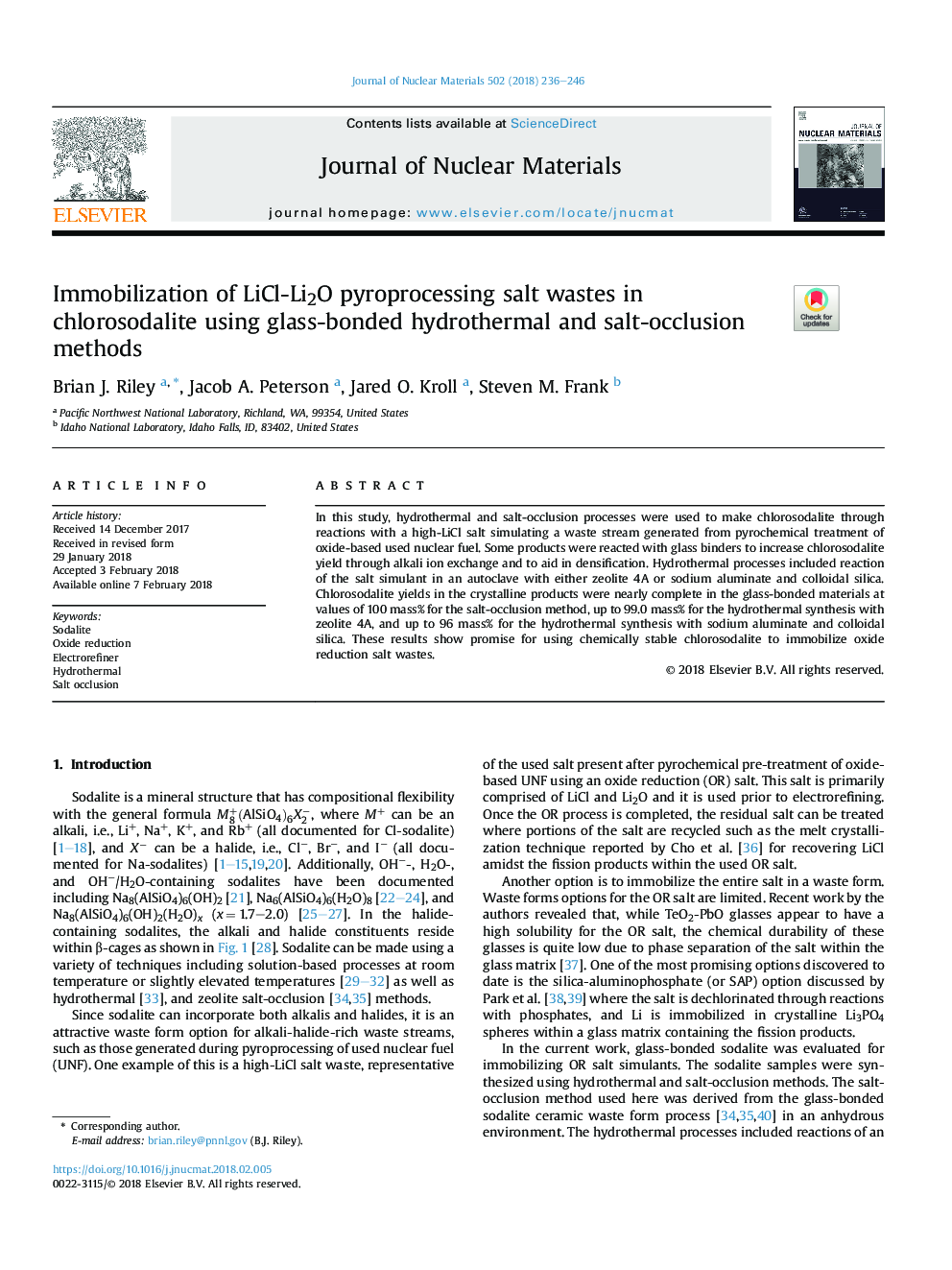| Article ID | Journal | Published Year | Pages | File Type |
|---|---|---|---|---|
| 7963366 | Journal of Nuclear Materials | 2018 | 11 Pages |
Abstract
In this study, hydrothermal and salt-occlusion processes were used to make chlorosodalite through reactions with a high-LiCl salt simulating a waste stream generated from pyrochemical treatment of oxide-based used nuclear fuel. Some products were reacted with glass binders to increase chlorosodalite yield through alkali ion exchange and to aid in densification. Hydrothermal processes included reaction of the salt simulant in an autoclave with either zeolite 4A or sodium aluminate and colloidal silica. Chlorosodalite yields in the crystalline products were nearly complete in the glass-bonded materials at values of 100 mass% for the salt-occlusion method, up to 99.0 mass% for the hydrothermal synthesis with zeolite 4A, and up to 96 mass% for the hydrothermal synthesis with sodium aluminate and colloidal silica. These results show promise for using chemically stable chlorosodalite to immobilize oxide reduction salt wastes.
Related Topics
Physical Sciences and Engineering
Energy
Nuclear Energy and Engineering
Authors
Brian J. Riley, Jacob A. Peterson, Jared O. Kroll, Steven M. Frank,
